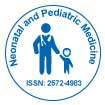Machine Translation in Neonatal Medicine Review
Received Date: May 01, 2023 / Published Date: May 26, 2023
Abstract
While AI clinical decision support tools appear superior to rule-based tools in many situations, their use can pose additional challenges. An example of this is the lack of large data sets and the existence of imbalanced data (e.g. due to low rates of adverse events) commonly observed in neonatal medicine. This paper describes the latest and most powerful applications of AI in neonatal medicine and highlights future research directions relevant to the neonatal population. AI applications currently being tested in neonatology include vital signs monitoring, disease prediction (respiratory distress syndrome, bronchopulmonary dysplasia, apnea of prematurity), risk stratification retinopathy of prematurity, intestinal perforation, jaundice it is included. including tools for neurological diagnosis and prognostic support. New image recognition techniques (especially useful for staging, neuroimaging, etc.) and timely detection of infections. Tools like these that support neonatal doctors in their daily practice could be very revolutionary in the near future. On the other hand, in order to use AI technology correctly, it is important to be aware of its limitations.
Citation: Perera M (2023) Machine Translation in Neonatal Medicine Review.Neonat Pediatr Med 9: 307. Doi: 10.4172/2572-4983.1000307
Copyright: © 2023 Perera M. This is an open-access article distributed under theterms of the Creative Commons Attribution License, which permits unrestricteduse, distribution, and reproduction in any medium, provided the original author andsource are credited.
Share This Article
Recommended Conferences
42nd Global Conference on Nursing Care & Patient Safety
Toronto, CanadaRecommended Journals
Open Access Journals
Article Tools
Article Usage
- Total views: 552
- [From(publication date): 0-2023 - Feb 01, 2025]
- Breakdown by view type
- HTML page views: 480
- PDF downloads: 72
